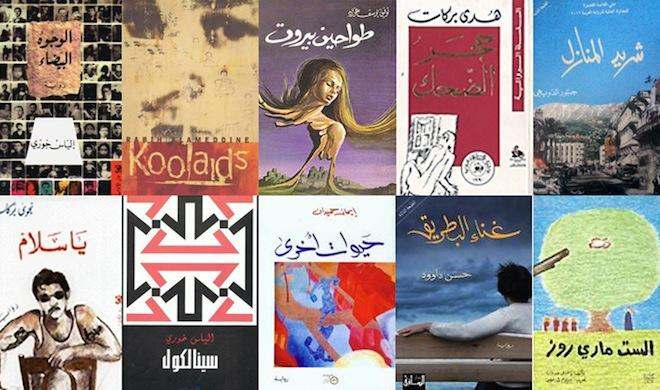
Literature The civil war — although it officially ended in 1990 — continues to preoccupy novelists, with new books set during war-time coming out every year. The renowned blogger ‘ArabLit’ looks back at how civil war shaped the Lebanese novel, and recommend 15 great books set just before, during, and after the war.
The 1960s brought changes to Lebanon and countries around the world, among these a mini-renaissance in Lebanese literary writing. “There was some kind of revival,” Lebanese novelist Rawi Hage said in a 2013 interview, “and a very progressive community…formed in Lebanon, mostly around the AUB area around Ras Beirut.”
It was an era of openness to world literature and formal experimentalism, with important work being done by authors Elias al-Diri and Youssef Habchi El-Achkar, among others. Publishing houses flourished. Books that couldn’t be printed in neighboring countries, for one reason or another, found their way to Lebanon.
But by the early 1970s, war was looming. Literary works began to grapple with what was to become a fifteen-year civil war, such as El-Achkar’s celebrated Don’t Sow Roots in the Sky and Toufiq Youssef Awad’s The Mills of Beirut (in English as A Death in Beirut), prophetic in its analysis of the coming war.
The full outbreak of war in 1975 disrupted publishing, but it didn’t stop literary experimentation. Authors continued to write their way through the war, some in Lebanon and some in exile, pushing an examination of all the complicated threads of Lebanese identity.
“War,” Lebanese novelist Iman Humaydan wrote in email, “destroyed the mainstream ethics which were generated by the ruling (Maronite) political power. It gave voice to underground Beirut, the peripheral areas. Though it was an urban production, its characters were mainly coming from the marginal areas: the characters of Hanan al-Shaykh, Hoda Barakat, Rachid al-Daif.”
“I remember when I was in my early teen years,” Humaydan wrote. “The TV soap operas never showed us people coming from the peripheral areas, never from the south, for example, as if the south didn’t exist. And if they showed someone from the mountain it was to make fun of him. The novel broke with all these stereotypes. In a sense it was a revolutionary step towards a new approach to understanding the Lebanese society.”

Since 1975, the Lebanese novel hasn’t stopped grappling with civil war, which remains a central obsession – if not the central obsession – of Lebanese literary production, cutting across language and genre. Novelists of international stature have returned to the topic again and again.
Lebanese novelist Rabih Alameddine, who writes in English, has been re-visiting the Lebanese civil war since his groundbreaking 1998 novel, Koolaids. His National Book Award-shortlisted 2014 novel, An Unnecessary Woman, also takes place during and after the civil war. Over twitter, Alameddine said that the civil-war books he finds “important for various reasons” are Sitt Marie Rose by Etel Adnan, The Stone of Laughter by Hoda Barakat, DeNiro’s Game by Rawi Hage, and Penguin’s Song by Hassan Daoud.
“And you probably have to include something by Rachid Daif and something by Elias Khoury,” Alameddine added. Or, indeed, many somethings by Elias Khoury.
Great Lebanese civil-war novels include those that examine the time before the war, such as Jabbour Douaihy’s June Rain, which is an exploration of sectarian killings in 1957, or after the war, when Lebanese must go back – or can’t go back – to “ordinary lives.” Standouts among post-war books include Najwa Barakat’s Ya Salaam!, Iman Humaydan’s Other Lives, Rabee Jaber’s The Mehlis Report,and Elias Khoury’s utterly terrifying Yalo.
There are even excellent children’s books that grapple with the civil war, such as Fatima Sharafeddine’s striking picture book, There is War in My City, and Zeina Abirached’s graphic novel for young readers, A Game for Swallows.
Comic artists and graphic novelists have equally obsessed over the war, including Lamia Ziade’s pop-artBye Bye Babylone, Lena Merhej’s Jam and Yogurt, and Mazen Kerbaj’s A Happy Childhood.
To narrow the list to just 15 books, one for each year of the conflict, necessarily leaves off brilliant, important, and necessary works, some of them mentioned above. It also consciously leaves off books written by non-Lebanese, such as Sonallah Ibrahim’s Beirut Beirut, which could make up another list entirely. This list begins with novels that explore the roots of war and ends with those that examine characters trying to understand the world “post-conflict.”
A Death in Beirut, by Toufiq Youssef Awad



